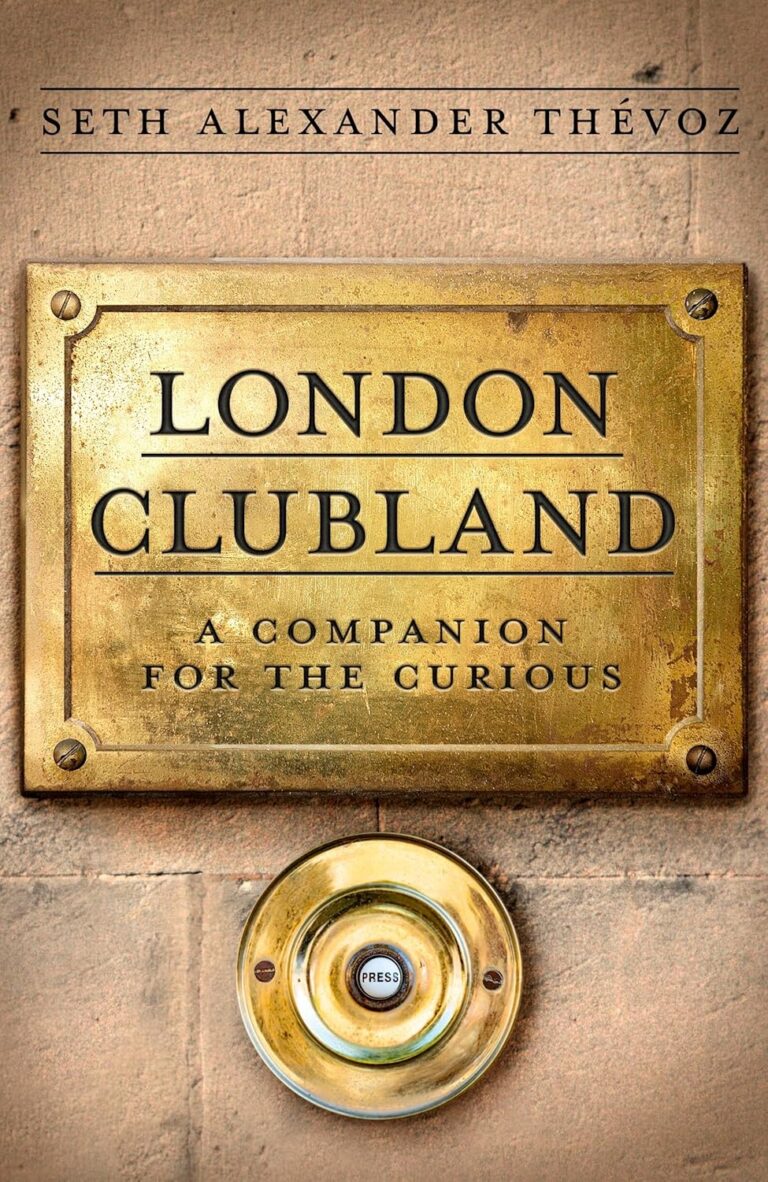I have never belonged to a London club, but I’ve trained for swimming the Hellespont at the Landsdowne Club, been accused of being an emotional vampire at the Chelsea Arts Club, and been advised by my father in the smoking room at Annabel’s, shortly before my first marriage, to “just stop”. I celebrated my 21st birthday at Brooks’s. I wrote a screenplay (which was never filmed) in the Hurlingham Club. Once a month at the Academy Club, I judged a poetry competition, into which I invariably submitted a hopeful entry under the pseudonym Janice Novaya.
I say this not to boast. Or at least, that’s not my only motivation. It’s also because I think the main readership for this book will be people who have some familiarity with London clubs, and who, like filmgoers who read the reviews after a trip to the cinema, will want to check their own experience against the verdicts of the author.
So in my case, I was pleased to see that Auberon Waugh, who I used to work for, was credited with the creation of the Academy Club. I hadn’t had any idea that the Chelsea Arts Club was the brainchild of James Whistler. And I was dismayed that Brooks’s snooker table had escaped the list of clubs offering a snooker room.
By then, though, I was enjoying the ride. The first half of London Clubland is a competent compendium. Each of 140 clubs gets an entry, from the old ones such as Brooks’s to newer ones such as the Groucho. This section also includes the odd eccentric outlier, such as the Yeoman Warders Club, which operates within the Tower of London and consists solely of Beefeaters.
There’s wit as well as clarity in the way these entries are done. Alongside a “short history”, each has a sentence on “what they want you to know” and “what they probably don’t”. Boodle’s wants to you to know, for example, they were Ian Fleming’s club, but not that a member once shot himself in the billiard room. Buck’s wants you to know they invented Buck’s Fizz, but not that Margaret Thatcher was a member. The Special Forces Club, which has many members in the intelligence services, wants you to know… nothing.
The second section, devoted to “Club Culture”, is more hit and miss. An academic historian, who is personally and professionally preoccupied with clubs, Seth Alexander Thévoz writes pretty sensibly as he takes us through 48 subsections such as “Feuds” and “Subscriptions explained”. Only occasionally does he let the mask of sanity slip. When he declares that anyone wearing red trousers is an “onanist”, for example, it’s hard to disagree. But I can’t help thinking the same could be said of anyone using the word “onanist”.
There’s some relatively racy stuff here. For example, we find a whole section devoted to “Clubs That Stephen Fry Has Apologised To for Taking Drugs In”. One of the highlights of the book is its selections from the clubs’ betting books. At Brooks’s in the late 18th century, we learn, Lord Cholmondeley bet Lord Derby roughly £100,000 (in today’s money) that he would at some point “fuck a woman in a balloon one thousand yards from the earth”. This mind-boggling wager was later called off, it seems, by mutual consent.
A drug-addled Stephen Fry? Off-colour bets? Combine this with the scathing social-stereotype descriptions in the section entitled “Clubhouse Types”—which include The pedant and The bored middle manager—and you’re left wondering: why would anyone want to join a place that brought them into contact with such people? I put this question to a friend of mine, who belongs to at least one London club. His reply: “Deep waters… Status, love, companionship, the possibility of gay sex. The usual.” Which was funny of him, but not wholly misleading, at least in its mention of status. It goes without saying that part of the appeal is related to Groucho Marx’s observation that he would never belong to a club that would have him. Put it another way: people want to join private members clubs because it’s hard.
My personal hunch is that the appeal of the older clubs also lies in their recreation of the public school experience. When the old boy relaxes in the library, surrounded by other old boys, he feels young again. It reminds me of Lord Curzon, who created a room at his home at Kedleston Hall that was an exact replica of his room at Eton. He used to sit in it and weep.

